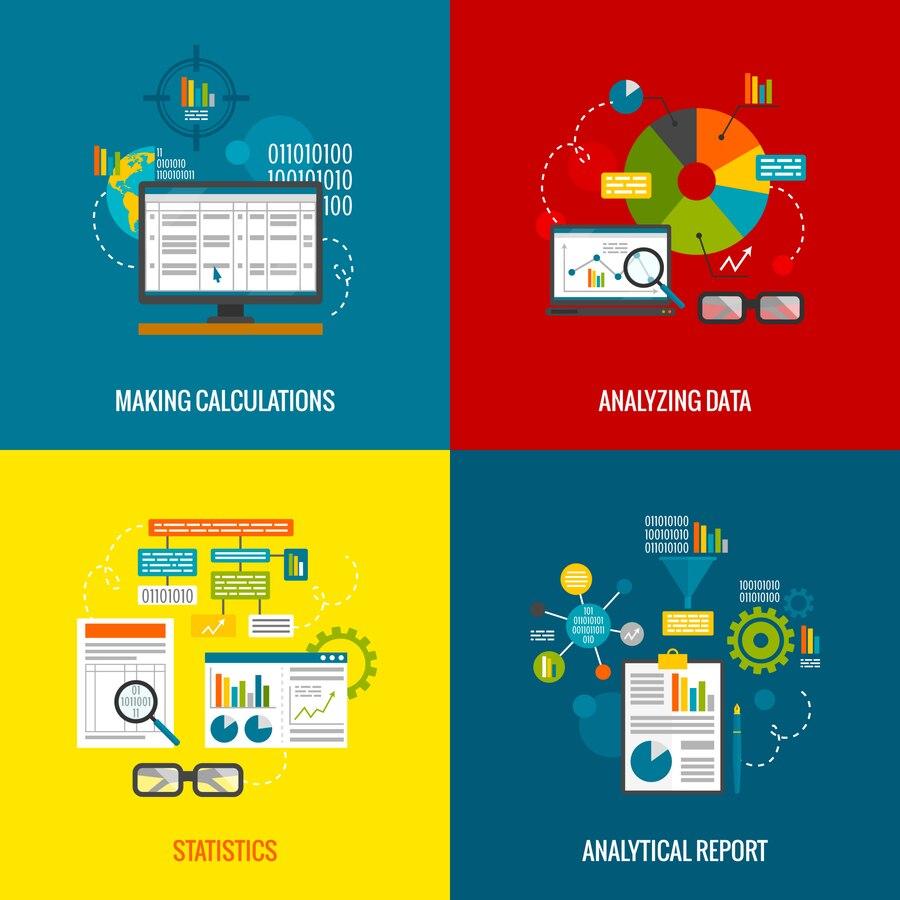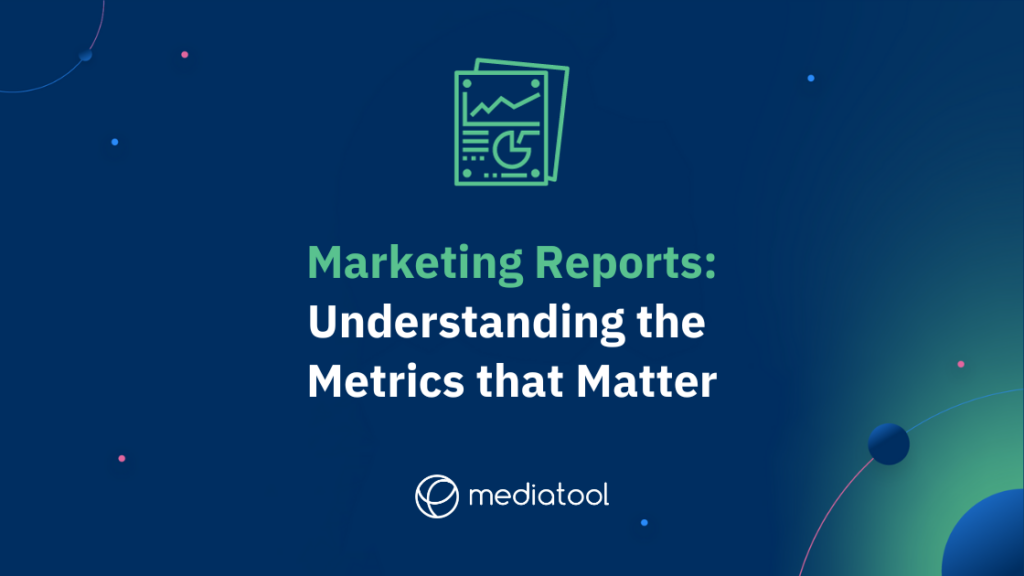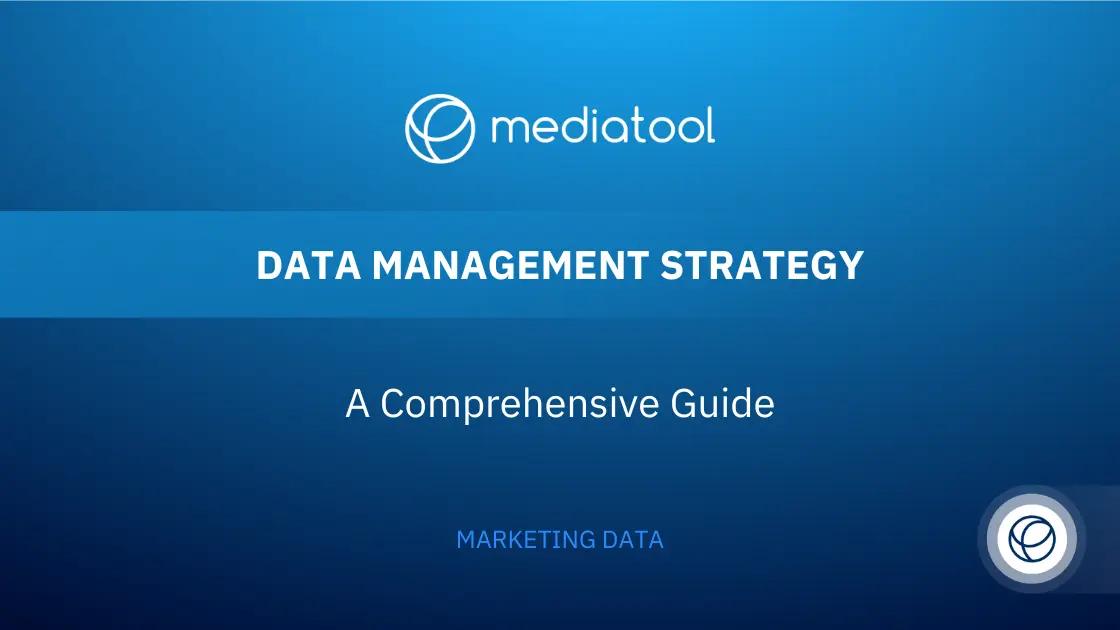In the world of business, information is power—and nowhere is this more evident than in the realm of marketing. ‘Marketing Reports’ serve as a beacon, illuminating the effectiveness of marketing strategies and the return on investment they bring.
These reports are not mere collections of numbers and charts; they are strategic narratives that guide decision-makers from campaign inception to conclusion.
By translating complex data into an understandable story, marketing reports empower teams to pivot, progress, and perfect their marketing efforts. Blog posts often draw on these comprehensive analyses to offer insights and narratives that resonate with a wider audience, beyond just the internal teams.
Whether it’s regarding online advertising performance, adjusting a digital ad spend, or refining content strategy, these documents provide the insight needed to ensure every marketing dollar counts.
Join us as we explore the indispensable role of marketing reports in steering businesses toward a prosperous trajectory in today’s data-driven marketplace.

What is a Marketing Report?
A marketing report is a comprehensive document that aggregates and analyzes marketing data from various campaigns and channels. It’s designed to track the performance of marketing efforts against predefined goals and KPIs (Key Performance Indicators), helping businesses understand which strategies are working and which are not.
This report is vital for a marketing team as it distills all the data into actionable insights that influence future marketing activities. Marketing reporting templates offer a standardized way to present these insights, ensuring consistency and efficiency in the reporting process.
Consistency and efficiency are maintained through marketing report templates, ensuring that all relevant key marketing metrics are monitored.
Creating a marketing report involves collecting data from platforms like Google Analytics to monitor website traffic, conversion rates, and other essential metrics related to digital marketing efforts.
Types of Marketing Reports
There are various types of marketing reports tailored to different aspects of a business’s marketing strategy. Each report utilizes different marketing channels and serves a unique purpose in a company’s overall marketing reporting framework. Here are a few:
General Marketing Reports
General marketing reports offer a panoramic view of a company’s marketing efforts, providing essential insights into the overall performance of all strategies combined.
Unlike detailed reports focused on specific channels like PPC or SEO, general marketing reports summarize the efficacy of various initiatives from blog posts to email campaigns.
Key Functions of General Marketing Reports:
- Performance Snapshot: Offer a high-level perspective on the marketing department’s achievements and areas for improvement.
- Strategic Guidance: Help in identifying overarching trends and guiding strategic decisions across the marketing mix.
- Interdepartmental Alignment: Ensure that marketing objectives are in sync with other business departments.
- Budget Utilization: Analyze the marketing spend against outcomes to inform future budget allocation.
Components of an Effective General Marketing Report:
- Executive Summary: Deliver the key findings succinctly for time-constrained stakeholders.
- Core Marketing KPIs: Highlight critical metrics such as lead generation, web traffic, and overall conversion rates.
- Channel Insights: Provide a snapshot of how different marketing channels contribute to overarching goals.
- Financial Synopsis: Include a clear assessment of the budget, spending efficiency, and ROI from marketing activities.
- Actionable Recommendations: Offer data-driven advice for future marketing tactics and expected projections.
General marketing reports translate diverse marketing efforts into strategic insights, showing how each initiative impacts the company’s broader objectives and financial goals. They’re essential for maintaining a clear and unified marketing strategy that aligns with the business’s overarching targets.
Marketing Performance Report
The marketing performance report serves as an indispensable tool for businesses to gauge the success of their marketing endeavors. Its primary function is to analyze a spectrum of marketing metrics, thus determining the alignment of the marketing strategy with the overarching business goals.
Within these reports, a detailed breakdown assesses each campaign’s contribution across various channels. This allows marketing teams to identify successful strategies and highlight those requiring revision or discontinuation.
Marketing performance reports are integral for fostering alignment between marketing and sales teams. They ensure both departments have a cohesive understanding of how marketing efforts bolster sales initiatives.
These reports are vital in financial strategizing, providing insights into the effective allocation of marketing budgets. By offering a clear depiction of investment returns, they guide better budgeting decisions for future campaigns.
SEO Marketing Report
This report zeroes in on the company’s search engine optimization performance. It evaluates key factors such as keyword rankings, the efficacy of link-building strategies, organic traffic volume, and content marketing success.
Utilizing tools such as Google Analytics, the report sheds light on the company’s online visibility and user engagement, interpreting how these elements impact overall marketing success.
It aids digital marketing professionals in gauging their website’s organic search performance. Also, the insights provided are instrumental in refining and enhancing SEO strategies.
The SEO marketing report is essential, as it reflects the discoverability of the business online, directly influencing potential customers’ ability to find and engage with the brand.
Social Media Marketing Report
A social media marketing report is a digital marketing report that encapsulates the effectiveness of a brand’s marketing efforts across various social media channels. This report typically includes key metrics such as engagement rates, follower count growth, and overall campaign performance.
By leveraging data from social media platforms, the marketing team can generate actionable marketing insights that help refine the marketing strategy.
A well-structured social media marketing report also compares current performance to previous periods, which could be demonstrated in monthly marketing reports.
It aids the marketing department in tracking the progress of social media marketing and advertising campaigns, aligning with the business goals, and adapting the digital marketing efforts to the target audience’s preferences.
Ecommerce Marketing Report
The ecommerce marketing report is an essential marketing report for online retailers. It dives into conversion rates, average order value, cart abandonment rates, and customer journey analysis through the sales funnel.
Utilizing tools like Google Analytics, this report provides a comprehensive overview of website traffic and user behavior, directly influencing marketing campaigns and strategies.
This marketing report helps businesses understand which digital marketing efforts drive sales and which areas need optimization. By analyzing all the data, the marketing team can work closely with the sales team to enhance the overall online shopping experience, thereby affecting marketing results positively.
Email Marketing Report
Email marketing reports focus on the analysis of marketing campaigns conducted via email. These reports reveal open rates, click-through rates, and direct conversions from emails, which are crucial marketing metrics for assessing campaign performance.
The astounding average return of approximately $42 for every dollar invested in email marketing efforts highlights the importance of meticulously documenting these figures in performance reports. By demonstrating such a significant ROI, these reports are an invaluable tool for marketing teams to justify and guide their email marketing strategies.
A robust email marketing report also includes segmentation data, showing how different groups within the target audience respond to various marketing activities. This relevant data is instrumental in tailoring future marketing campaigns to increase engagement and conversions.
Lifecycle Stage Funnel Marketing Report
This type of marketing report examines the effectiveness of marketing efforts at different stages of the marketing funnel, from awareness to decision-making. It assists in identifying how marketing activities impact the customer’s journey and which content marketing strategies are most effective at each lifecycle stage.
Through this report, marketing professionals can assess the health of their marketing funnel, understand how different touchpoints contribute to moving prospects toward a sale, and determine the key performance indicators most relevant at each stage. This analysis is integral for modern marketing reporting, providing a more nuanced view of the funnel than general marketing reports.
Channel-Specific Traffic Marketing Report
A channel-specific traffic marketing report examines the influx of website traffic attributed to distinct marketing channels, such as social media, email, search engines, and PPC campaigns. Within the realm of digital advertising, the PPC Marketing Report stands out. It gives an in-depth analysis of pay-per-click performance metrics, offering insights into cost-per-acquisition and the overall ROI of digital ads.
It’s an integral part of digital marketing reporting, providing actionable insights into how each channel contributes to the overall marketing performance.
By analyzing the marketing data from these reports, the marketing department can optimize the allocation of the marketing budget across various channels. Regular monitoring through weekly or monthly marketing reports can reveal trends and help the marketing strategy evolve in real time.
Google Analytics Marketing Strategy Report
Utilizing Google Analytics, a Google Analytics marketing strategy report provides a detailed view of web analytics, tracking key performance indicators like page views, bounce rates, and session duration.
It’s a valuable component of digital marketing reports, giving a comprehensive breakdown of user behavior and how it aligns with the business’s marketing efforts.
The insights from this web analytics report can guide marketing professionals in refining SEO strategies and content marketing approaches and improving the overall user experience on the website.
The frequency of this report can be adjusted based on specific campaign performance needs, ranging from monthly marketing reports to quarterly marketing reports.
Traffic Metrics
The Traffic Metrics report is a focused analysis of web traffic, crucial for understanding the impact of marketing efforts on website visits. It looks into traffic volume, sources, new versus returning visitors, and user actions on the site.
These marketing metrics provide a granular view of campaign performance, which is essential for evaluating the effectiveness of marketing activities.
This report can influence decisions regarding SEO, content creation, and the usability of the website. By regularly assessing these key metrics, a marketing team can identify patterns and make data-driven decisions, which can be tracked through various marketing reports, such as monthly or daily marketing reports for fast-paced environments.
How Often Should You Create a Marketing Report?
The frequency at which marketing reports should be created depends on several factors, including the pace of marketing activities, the dynamic nature of marketing channels, and the strategic business goals.
For agile marketing departments, weekly marketing reports may be necessary to keep up with rapid changes and optimize campaigns promptly.
However, it is startling to note that nearly 7 out of every 100 brands do not engage in measuring the effectiveness of their marketing efforts, leaving a gap in strategic planning and potential competitive advantage.
In contrast, a monthly report often provides enough insight for a broader overview of affected marketing results without overwhelming the marketing team with data.
Quarterly marketing reports might suffice for high-level strategic decisions and businesses with longer sales cycles.
Ultimately, the timing should align with the marketing department’s performance review schedules and the sales department’s needs, ensuring all stakeholders receive relevant KPIs and actionable marketing insights at the right time.
Digital Marketing Reports: Daily, Weekly, Monthly
Creating digital marketing reports for different timeframes requires a comprehensive understanding of the needs and pace of a company’s marketing activities.
Daily Reports
Daily digital marketing reports are most relevant in dynamic, fast-paced environments where immediate feedback on marketing activities is crucial.
These reports typically focus on metrics such as daily website traffic, click-through rates, social media engagement, and the performance of ongoing campaigns.
For instance, in social media marketing, tracking daily changes in engagement and reach can help in quickly adjusting content to align with emerging trends or audience reactions.
Daily reports are also essential for monitoring time-sensitive promotions or flash sales, providing insights that enable marketers to make swift decisions to optimize these short-term campaigns.
The key with daily reporting is to focus on actionable data that can drive immediate decisions and adjustments.
Weekly Reports
Weekly marketing reports strike a balance between immediacy and strategy.
These reports provide an overview of how marketing efforts have fared over the past week, allowing marketing teams to assess the effectiveness of their strategies in a short-term context.
Weekly reports often include metrics such as weekly lead generation, engagement rates, email marketing metrics, and performance of advertising campaigns.
This timeframe allows for reflection on what worked and what didn’t, enabling marketers to make informed tweaks to their strategies for the following week.
Weekly reporting is also a good time to align marketing efforts with sales outcomes, checking how marketing leads are converting into sales.
Monthly Reports
Monthly digital marketing reports offer a comprehensive view of marketing efforts over a longer period. These reports are crucial for understanding broader trends, evaluating the return on investment (ROI) of campaigns, and making strategic decisions.
Monthly reports should include an analysis of key performance indicators (KPIs) such as monthly traffic growth, lead generation, conversion rates, customer acquisition cost, and overall campaign performance.
This longer timeframe allows for a deeper analysis of data, helping to identify underlying trends, measure progress against quarterly or annual goals, and inform future marketing strategies.
Monthly reports are especially valuable for senior management and stakeholders who need an overview of marketing performance and insights for strategic planning.
Approximately 62% of marketers are now integrating their marketing reporting with built-in marketing or CRM software, reflecting a trend towards more streamlined, automated reporting processes. These integrated systems not only improve accuracy and save time but also facilitate the alignment of marketing metrics with business goals.
These reports testify to how digital marketing efforts are mapped to the overall marketing strategy and business goals. Marketing report templates can be used for each type to ensure consistency and efficiency in reporting, allowing more time for analysis rather than data collection.
What Should a Marketing Report Include?

An effective marketing report should serve as a mirror reflecting the marketing department’s performance across all marketing channels.
It should briefly include key performance indicators (KPIs) and marketing metrics that matter most to the business, such as leads generated, website traffic, and conversion rates.
It should also summarize marketing campaigns, including content marketing efforts and digital reports on PPC and SEO performance.
Crucial to the report is the analysis of marketing data gathered from tools like Google Analytics, which provides insights into user behavior, organic traffic, and the effectiveness of different marketing strategies. The report must culminate with actionable marketing insights that enable the marketing team to optimize future marketing efforts.
Who’s the Audience for Your Marketing Report?
Understanding the audience is essential for tailoring the depth and content of the marketing report. For the marketing team and marketing department, detailed marketing metrics and insights into campaign performance are necessary.
The sales team might seek precise data on how marketing efforts are generating leads and affecting sales results. C-suite executives or marketing CMO report recipients will appreciate a higher-level view, focusing on how digital marketing contributes to the company’s bottom line and strategic objectives.
For external stakeholders, such as clients or investors, the marketing report should highlight the value and ROI of marketing activities, distilling complex data into understandable takeaways that align with their interests.
How to Present Your Clients’ Marketing Data
When presenting marketing data to clients, clarity is paramount. The digital marketing report should present more than just numbers and charts; it should tell a story of how marketing efforts translate into results.
Whether through an email marketing report, a blog leads report, a social media marketing report, or a general digital marketing reporting document, the presentation should link marketing metrics to client-specific objectives and provide relevant KPIs that illustrate the effectiveness of marketing strategies.
Visual aids such as graphs and marketing dashboards can significantly enhance the comprehension of complex data, making it easier for clients to see the progress and impact of marketing efforts. By offering a narrative that includes not just what the numbers are but what they mean, clients can gain actionable marketing insights that justify their investment and guide future marketing decisions.
Common Challenges of Marketing Reporting
Creating a marketing report is often fraught with challenges that can significantly impact the effectiveness of marketing efforts. One prevalent issue is data silos, where information is segmented and inaccessible across different departments.
This situation is far from rare, as a staggering 72% of firms report that managing data silos across multiple systems and regions is moderately to extremely challenging.
Data silos can result in a lack of transparency, efficiency, and trust within a business and across customers. This segmentation makes it difficult to compile a comprehensive marketing report, leading to inconsistent metrics where different teams may use varying standards to measure marketing performance, hindering a unified strategy.
Additionally, it’s been reported that 47% of CMOs struggle to demonstrate the business impact of their marketing efforts due to data silos.
The complexity of data interpretation presents another challenge. With a multitude of marketing channels—from Google Ads to social media platforms—each generating vast amounts of marketing data, distilling this into clear, actionable marketing insights can overwhelm even seasoned marketing professionals.
This situation necessitates a coherent approach to digital marketing reporting that can translate complex web analytics and key marketing metrics into understandable and relevant data for all stakeholders.
Monthly Marketing Report Examples and Templates

Monthly marketing reports are pivotal in addressing the need for coherent long-term tracking. These reports allow marketing teams to observe trends and patterns that may not be evident in daily or weekly marketing reports.
Monthly reporting requires templates that are flexible enough to accommodate different types of marketing reports—like email marketing reports or social media marketing reports—and structured enough to maintain consistency across periods.
Examples of a monthly marketing report template typically include sections for each key marketing channel, providing an overview of campaign performance, marketing metrics such as website traffic and conversion rates, and a breakdown of the marketing budget.
These report templates act as a blueprint for marketing departments to follow, ensuring that each monthly marketing report delivers relevant KPIs and insights, reflecting the digital marketing efforts made during that period.
Automated Delivery
In the modern marketing reporting landscape, automation is vital. Leveraging tools that facilitate the automated delivery of marketing reports can save precious time and reduce the risk of human error. Automation ensures stakeholders receive timely marketing reports, critical for monthly reporting cycles and when tracking time-sensitive marketing campaigns.
The significant anticipated expansion of the marketing automation market, expected to reach a robust $9.5 billion by 2027 with a steady CAGR of nearly 9.9%, underscores the increasing reliance on these systems. This growth indicates a trend towards more sophisticated automation tools that can not only streamline the delivery but also enhance the precision and relevance of marketing reports.
Automated delivery systems can be set up to pull all the data from various marketing channels, compile them into a digital marketing report, and distribute them to the relevant audience, such as the sales team, marketing department, or C-suite executives.
By automating this process, marketing professionals can spend more time analyzing the marketing data and less on the mechanics of report generation.
Digital Marketing Reporting Best Practices
Strategic Alignment with Business Goals
This approach emphasizes the importance of aligning marketing metrics with overarching business objectives. For instance, if the business goal is to increase market share, the report should focus on metrics like customer acquisition rates and market penetration.
This alignment ensures that every aspect of the marketing report contributes directly to achieving the business goals. It also helps in evaluating the marketing strategies’ effectiveness in real business terms, making the report a strategic tool for decision-making.
Utilization of Analytical Tools
Effective digital marketing reporting relies heavily on the use of sophisticated analytical tools. Google Analytics is a prime example, offering in-depth insights into various performance metrics.
These tools allow marketers to track website traffic, user engagement, conversion rates, and the overall effectiveness of different campaigns.
By leveraging these tools, marketers can gain a comprehensive understanding of their audience’s behavior and preferences. This in turn helps in making data-driven decisions and optimizing marketing strategies for better results.
Audience-Specific Customization
Digital marketing reports should be tailored to the knowledge and needs of their intended audience. For instance, a report for C-level executives might focus on high-level metrics and ROI, whereas a report for the marketing team might delve into more detailed analytics.
This customization ensures that the report is relevant and comprehensible to its readers, making it more likely to be used effectively.
Additionally, considering the audience’s background and familiarity with digital marketing concepts can help in presenting the data in a more accessible manner.
Visual Aid Implementation
Incorporating visual aids like graphs, charts, and dashboards is crucial for effective communication in digital marketing reports. These visual elements present complex data in a clear and concise manner, making it easier for stakeholders to understand and interpret the information.
Effective visuals can highlight key trends, patterns, and anomalies in the data, aiding in quicker decision-making. This approach is particularly useful when dealing with large datasets or when presenting to stakeholders who may not have a deep understanding of the technical aspects of digital marketing.
Benchmarking Against Industry Standards
Benchmarking involves comparing a company’s performance metrics against industry standards or best practices. This comparison provides valuable context, helping stakeholders understand how the company is performing relative to its competitors.
It can highlight areas of strength and opportunities for improvement. Benchmarking can also inform goal setting and strategy development, ensuring that the company’s marketing efforts are not only effective but also competitive.
Benchmarking against industry standards provides context for a company’s performance. Misalignment between sales and marketing can be costly, with companies losing over $1 trillion annually due to the gap between these functions. 85% of businesses believe that having the same goals and KPIs is key to successful sales and marketing alignment.
Insightful Analysis for Actionable Outcomes
Beyond just presenting data, a good digital marketing report should provide insightful analysis that leads to actionable outcomes. This means interpreting the data to understand what is driving the observed trends and outcomes.
For instance, if there is a spike in website traffic, the report should explore possible reasons, such as a recent marketing campaign or changes in search engine algorithms.
This deeper analysis helps in identifying not just what is happening, but why it’s happening, enabling the company to make informed decisions and strategic adjustments in its marketing approach.
Beyond data presentation, insightful analysis leading to actionable outcomes is crucial. For instance, a KPI tracker used by Influence & Co. led to a 47% rise in marketing-generated revenue by aligning sales and marketing KPIs. This approach ensures that reports not only show what is happening but also why it’s happening, enabling informed decisions and strategic marketing adjustments.
Conclusion
Marketing reports are super important for businesses that want to get better at marketing and make sure they’re getting their money’s worth.
These reports gather all the most important metrics and info about how different marketing campaigns are doing and compare them to the company’s main goals and the important targets they’re trying to hit.
Different types of marketing reports fit different business needs. Some businesses need quick daily updates to make fast decisions, while others might look at detailed reports every three months to get the big picture. Using set templates for these reports makes sure that nothing gets missed and lets marketers focus on figuring out the important messages from all the data.
It’s also key to think about who will read these reports. The marketing folks, the sales team, and the top bosses might all need different information. Tools like marketing dashboards help ensure these reports tell everyone what they need to know about digital marketing efforts and help plan what to do next.
Digital marketing constantly changes, so it’s vital to keep up with the latest trends and changes. By always being ready to adapt and looking for the key takeaways in the data, businesses can do more than just keep track of their marketing; they can boost their performance and stand out in a crowded online world.




